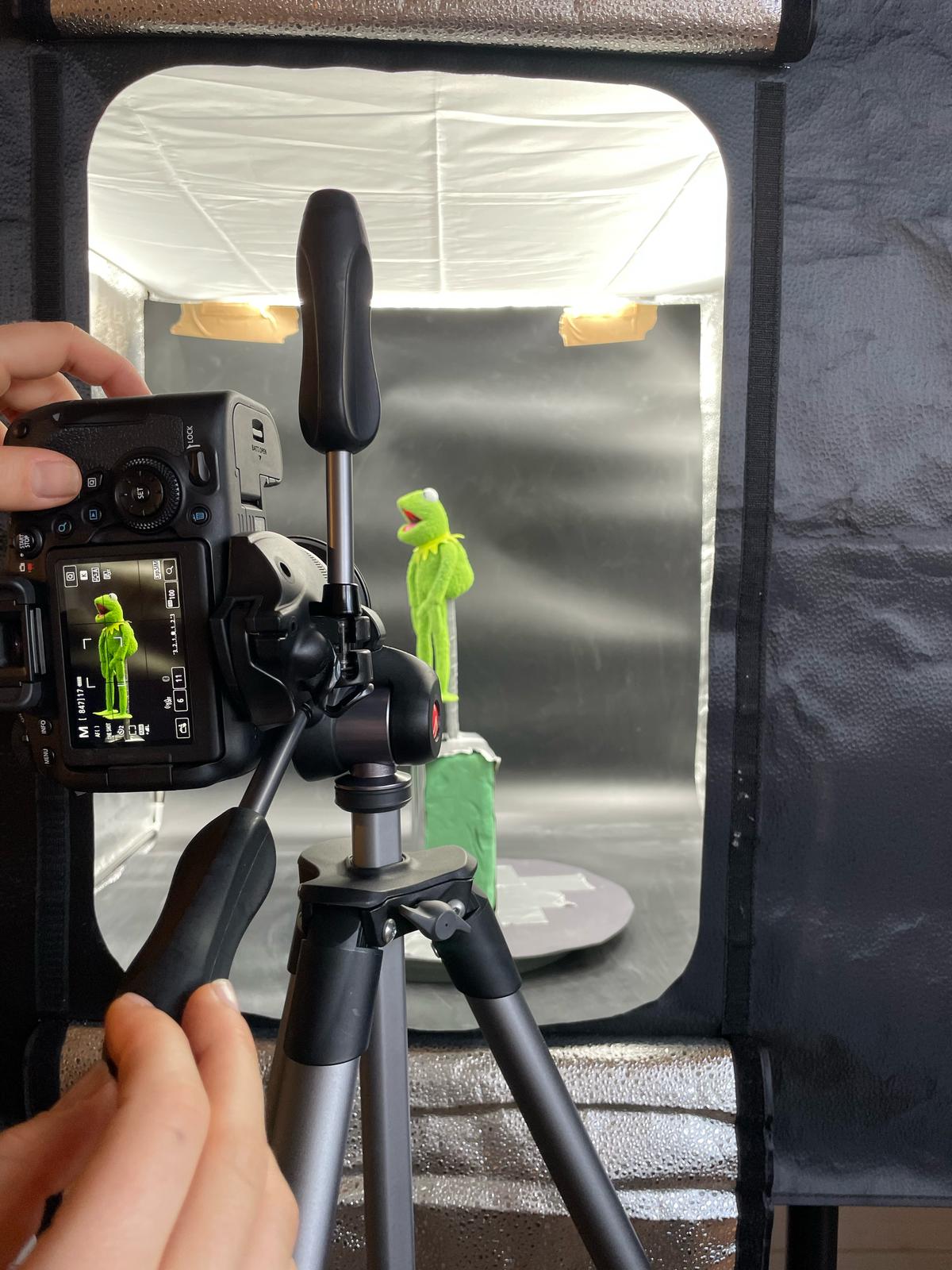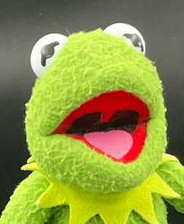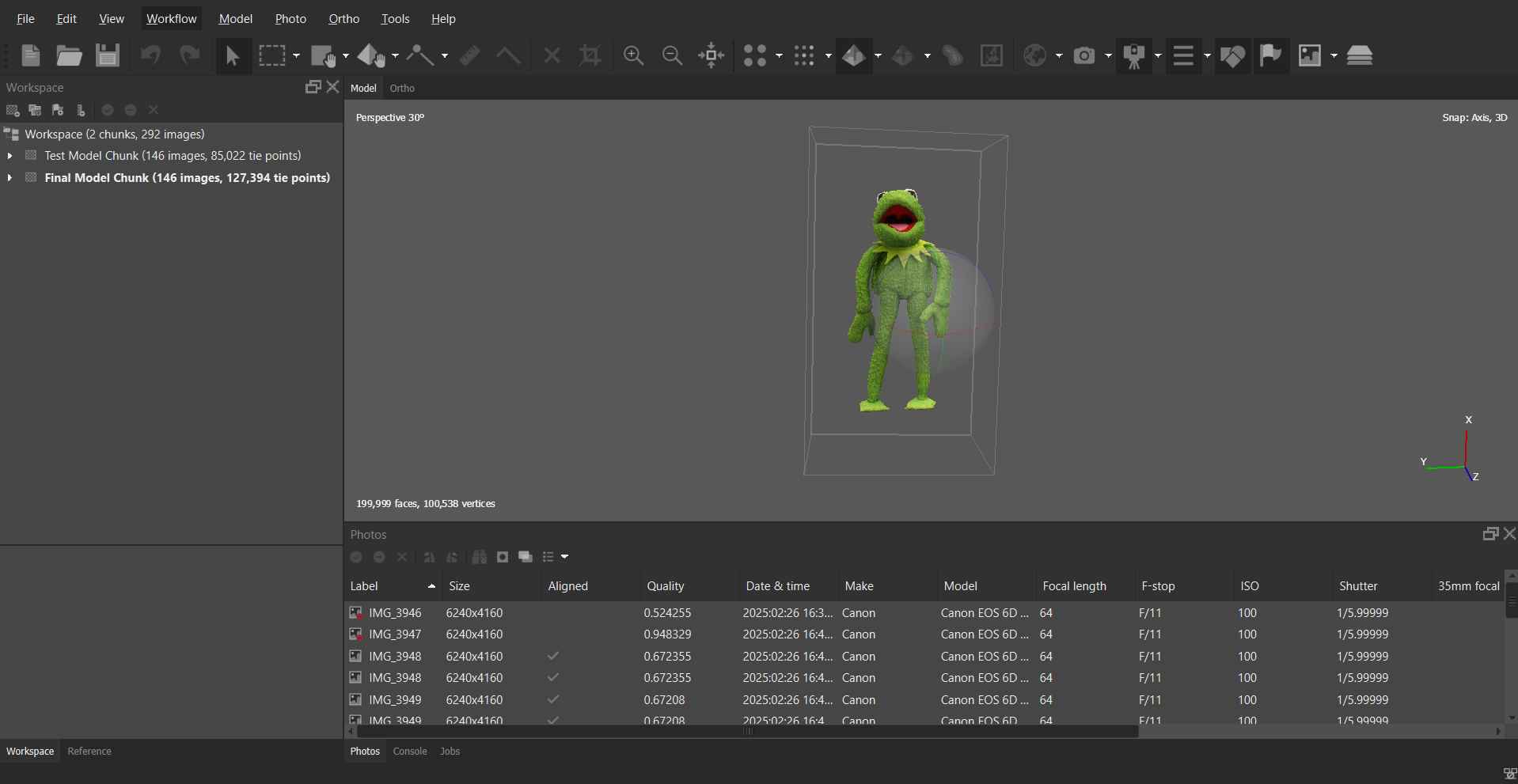
In creating the 3D model of Kermit the Frog, we used Structure-from-Motion (SfM), a technique that is part of the broader field of photogrammetry. Photogrammetry is a method of creating 3D models from multiple photographs by analyzing the geometry and positioning of key points across the images. During our process, Kermit's soft structure posed a challenge in stabilizing him for accurate image capture. To address this, we used very small needles to keep his feet in the correct position. Thankfully, these needles were not visible in the final 3D model. Additionally, the setup involved using a lightbox with a black background to enhance the contrast and provide consistent lighting, crucial for effective image capture.

The software we used to process the images and create the 3D model was Metashape, an industry-standard photogrammetry tool developed by Agisoft. Our first attempt at creating the 3D model turned out better than expected, making the process smoother than anticipated. We were able to achieve a satisfactory result on the first try, so there was no need to redo the process. However, the background of the lightbox was black, as was the inside of his mouth, which could have caused Metashape to have difficulty recognizing the geometry of Kermit's mouth. Fortunately, this was easily fixed with masking in Metashape.


Creating the 3D model of Kermit was a rewarding process, though not without its challenges. While the initial outcome exceeded our expectations, a few imperfections remained that needed to be addressed. To refine the model, we turned to Blender, an open-source 3D modeling software that provided us with the precision and flexibility necessary for the task. It was here that we were able to give Kermit the finer details that truly brought his character to life. The upcoming sections will take you deeper into the editing of Kermit. Keep reading as we dive more into the technical side of our work and reveal the behind-the-scenes process of bringing Kermit to life in 3D.